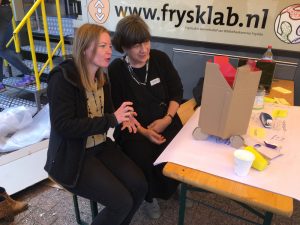Begonnen habe ich dieses Post in einem Café am Markt in Amersfoort. In der letzten Woche war ich bei der Smart Stuff that Matters Unconference, die Elmine Wijnia
und Ton Zijlstra in ihrem neuen Haus durchgeführt haben. Am folgenden Tag haben sie alle Teilnehmerinnen und Teilnehmer zu einem Grillfest eingeladen. Anlass war der 40. Geburtstag von Elmine. Vor ein paar Jahren war ich bei einer ähnlichen Veranstaltung, damals zu Tons 40. Geburtstag. Andere Unkonferenzen bei Ton und Elmine, alle unter dem Obertitel Stuff that Matters, habe ich leider verpasst.
